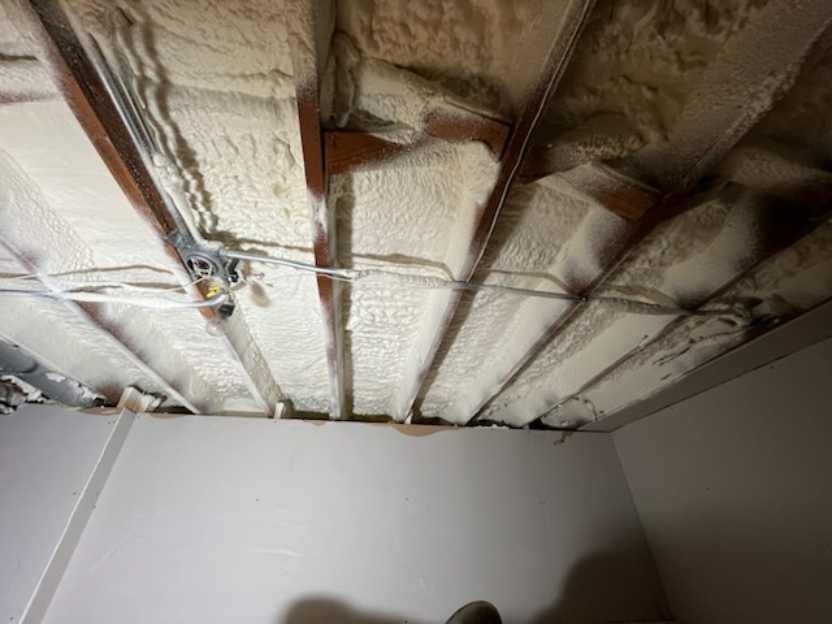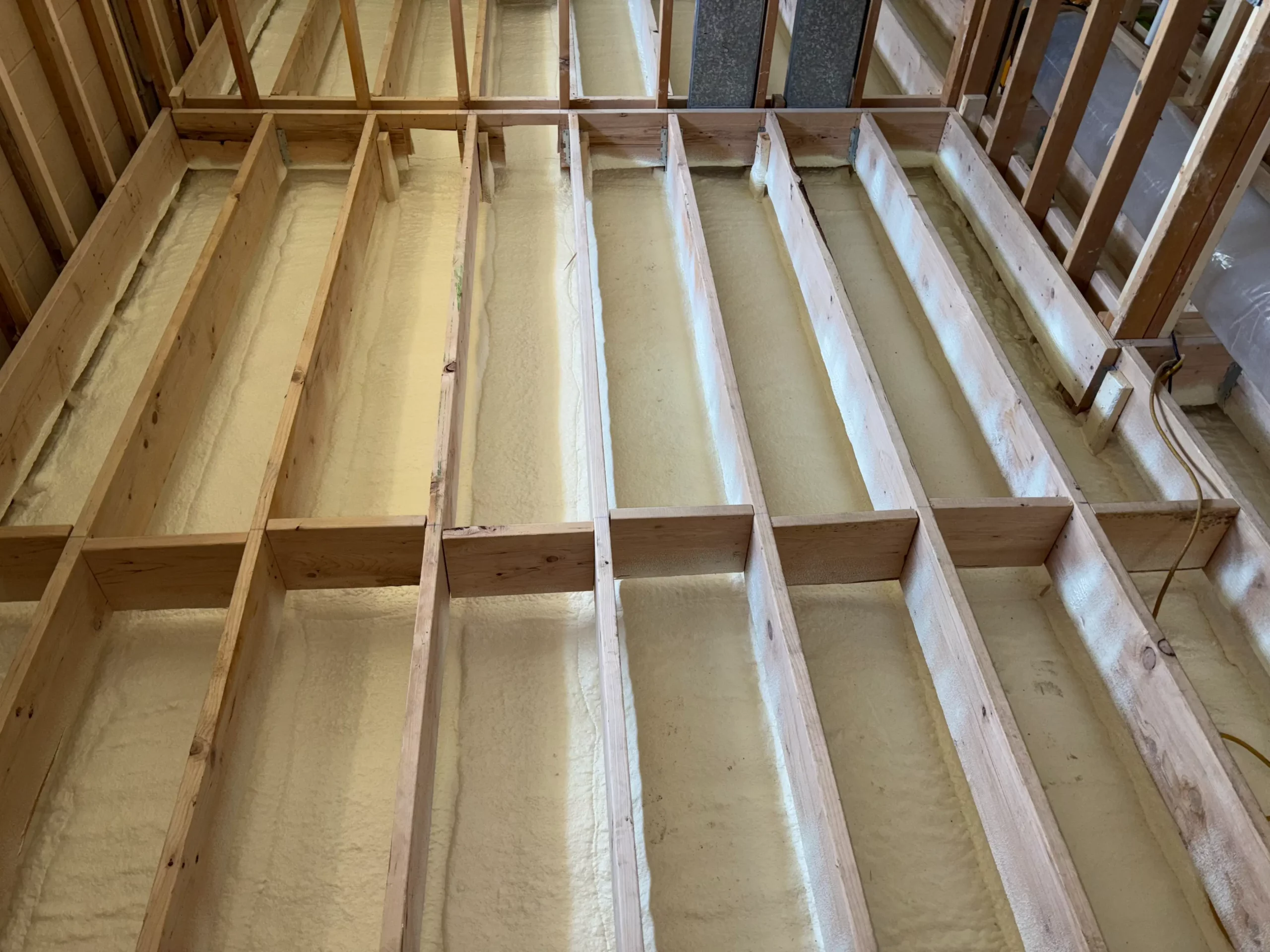
Spray foam insulation beats traditional options like fiberglass batts or cellulose in three key areas: it seals air leaks completely, delivers stronger thermal resistance per inch, and lasts longer without settling or degrading. Such benefits result in greater energy efficiency, comfort, and long-term cost savings. Homeowners in cold climates notice the difference right away when drafts disappear and heating systems run less.
This article breaks down each reason with practical details and real-world examples. Readers will learn how these benefits apply to everyday homes and what factors to weigh before choosing insulation. South Chicago Insulation bases this information on hands-on work with local properties over two decades, handling everything from attics to basements in the Midwest’s variable weather.
Air leaks account for up to 40% of a home’s energy loss, according to the U.S. Department of Energy. Traditional insulation like fiberglass leaves gaps around wires, pipes, and joints, allowing conditioned air to escape. Spray foam expands to fill every crack and crevice, creating a tight barrier that stops unwanted airflow.
In practice, this means fewer hot spots in rooms and reduced strain on HVAC systems. For instance, during a retrofit in a Chicago bungalow, spray foam covered irregular shapes in the rim joists that batts could not reach. The result was an even indoor temperature without constant thermostat adjustments.
Bonus Tip: Apply spray foam in layers to avoid over-expansion in tight spaces; this prevents pressure buildup and ensures a smooth seal.
In addition to superior air sealing, spray foam delivers higher thermal performance. Thermal resistance, measured as R-value, shows how well insulation blocks heat flow. Spray foam achieves R-6 to R-7 per inch for closed-cell types, compared to R-3.1 to R-4.3 for fiberglass batts, as detailed in a study by Oak Ridge National Laboratory. This efficiency allows thinner layers to match or exceed the performance of bulkier traditional materials.
Homeowners save on energy because less heat escapes in winter and stays out in summer. Market data from the Department of Energy indicates that homes with spray foam use 10-15% less heating fuel annually U.S. Department of Energy. In the Chicago area, where winters drop below freezing, this translates to noticeable reductions in natural gas bills during peak months.
The table below compares key specs:
| Insulation Type | R-Value per Inch | Air Permeability | Thickness for R-38 |
|---|---|---|---|
| Closed-Cell Spray Foam | 6.5 | Low (seals air) | 5.8 inches |
| Fiberglass Batts | 3.5 | High (leaks possible) | 10.9 inches |
| Cellulose Loose-Fill | 3.2 | Moderate | 11.9 inches |
This setup shows why spray foam fits in confined areas like cathedral ceilings without losing effectiveness.
Bonus Tip: Test wall cavities for moisture before installing closed-cell foam; it adds a vapor barrier that works well in humid Midwest summers but needs balance to avoid trapping excess dampness.
Traditional insulation settles or compresses over years, creating voids that lower its effectiveness. Spray foam adheres directly to surfaces and maintains its shape, resisting sagging, pests, and moisture damage. A Building Science Corporation analysis found that spray foam retains 95% of its R-value after 20 years, far outpacing fiber-based options Building Science Corporation.
This durability reduces the need for replacements and protects against mold in damp climates. For Chicago homes exposed to lake-effect snow and freeze-thaw cycles, spray foam prevents wood rot by blocking water intrusion at entry points. One project involved insulating a crawlspace where previous batts had molded; the foam application stopped further issues and improved air quality indoors.
Market trends support this edge: The spray foam sector grew 6.5% yearly from 2018 to 2023, driven by demand for reliable, low-maintenance solutions, per Grand View Research Grand View Research.
Bonus Tip: Pair spray foam with proper ventilation in attics to manage any off-gassing during curing; this keeps indoor air fresh in tightly sealed homes.

After reviewing the main benefits of spray foam—superior air sealing, higher thermal performance, and long-term durability—assess your home’s current setup and climate needs first. In the Chicago region, extreme cold demands high R-values, but high humidity requires attention to vapor control. Closed-cell foam acts as a moisture barrier, ideal for basements prone to flooding, while open-cell suits dry attics for its sound-dampening qualities.
Budget plays a role: Initial costs for spray foam run higher, but energy savings recover the investment in 5-7 years. Check for local rebates through ComEd or Nicor Gas programs that offset expenses. Inspect for code compliance, as Illinois building standards mandate specific R-levels for new construction and retrofits.
Evaluate installer qualifications too. Proper mixing and application prevent issues like incomplete curing. Factor in your home’s age; older structures may need structural reinforcements before adding weight.
Spray foam sets quickly, with most full-home projects completed in one to two days. This is faster than traditional methods, which require more time for cutting and fitting.
Spray foam helps reduce long-term resource use by lowering energy demand, though its production does involve chemicals. Low-VOC options certified by Greenguard offer a safer, eco-friendlier choice.
Yes, it adapts well to irregular structures common in pre-1970s Chicago homes. Professionals assess joist spacing and wiring to avoid interference, ensuring safe application without major renovations.
Ideal conditions stay between 50-100°F. In colder Chicago winters, crews warm the space or use specialized equipment to maintain foam quality and expansion.
It helps by sealing attics and boosting insulation, which keeps roofs warmer and reduces melt-refreeze cycles. Combine it with ridge vents for best results in snowy areas.
Closed-cell suits basements due to its water resistance and rigidity. It blocks radon and pests while adding structural strength to concrete walls.
Add spray foam over it for a hybrid approach that boosts overall performance. This method seals gaps without full removal, cutting costs and disruption.
Spray foam excels through tight air sealing, superior R-value, and lasting performance that traditional insulation struggles to match. These features cut energy use and improve home comfort, especially in demanding climates like Chicago’s.
Evaluate your space by checking for drafts, measuring current insulation, and considering local weather patterns. Match the type to your needs and consult building codes to align with long-term efficiency goals.
Contact South Chicago Insulation at (779) 803-8025 or [email protected] to discuss options tailored to your property. Experts review your setup and explain how spray foam fits specific challenges, helping achieve reliable results without unexpected costs. Start with a free assessment to identify gains in energy savings and indoor comfort.